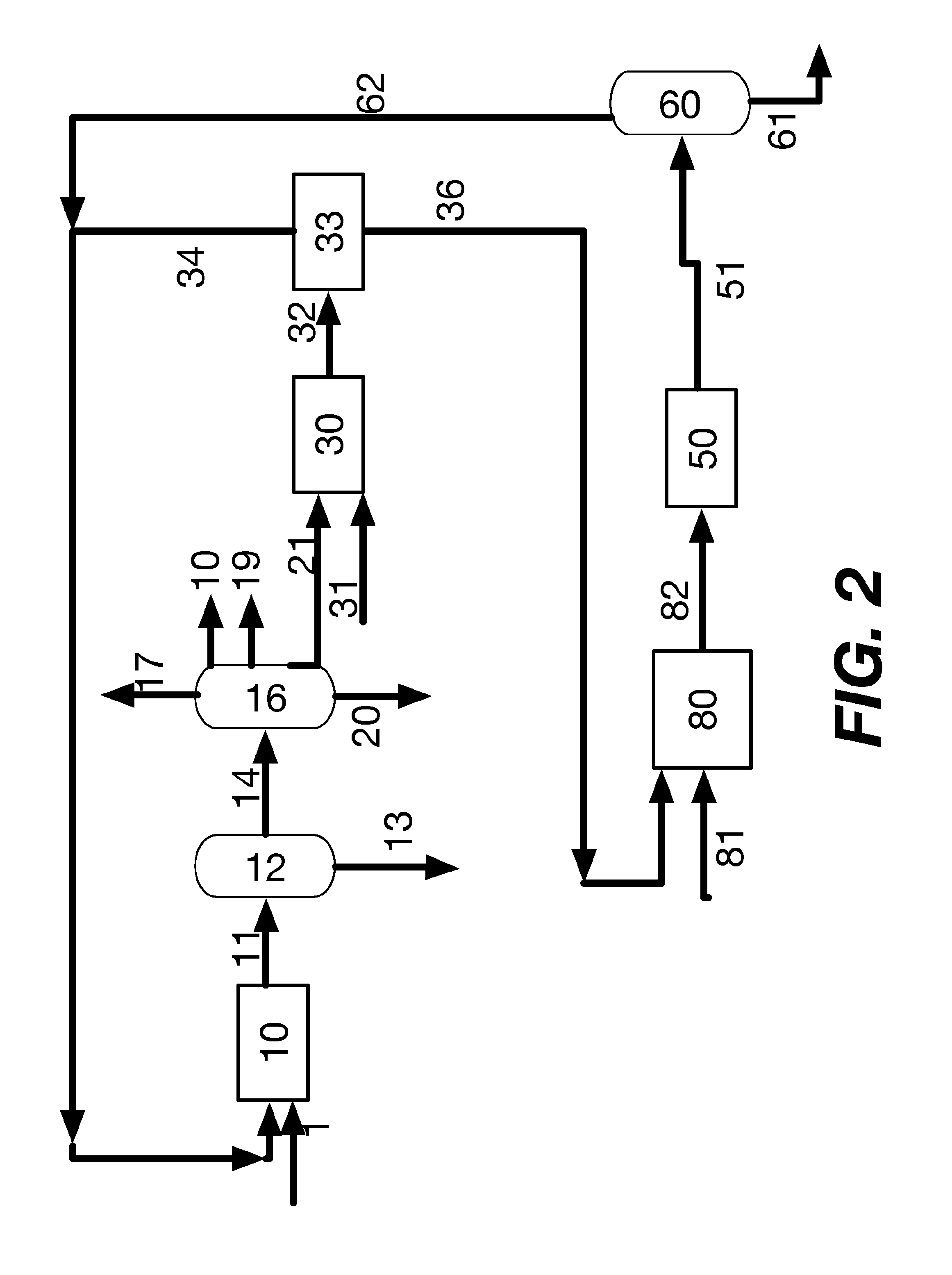Process for preparing ethylene, propylene and isoprene from an oxygenate
a technology of oxygenate and ethylene, which is applied in the field of process for preparing ethylene, propylene and isoprene from oxygenate, can solve the problems of complex isolation of isoprene from pyrolysis gasoline, low yield of isoprene from steam cracking process, and inability to convert byproducts of the process, in particular n-butenes, into additional ethylene and propylene. to achieve the effect of increasing the yield of lower o
- Summary
- Abstract
- Description
- Claims
- Application Information
AI Technical Summary
Benefits of technology
Problems solved by technology
Method used
Image
Examples
Embodiment Construction
[0013]In the process according to the invention, ethylene, propylene and isoprene are prepared from an oxygenate, in a process comprising several steps. In a first step, an oxygenate is converted into lower olefins, i.e. ethylene and propylene, by contacting the oxygenate with a molecular sieve-comprising catalyst at a temperature in the range of from 350 to 1000° C. (oxygenate conversion step a)).
[0014]Reference herein to an oxygenate is to a compound comprising at least one alkyl group that is covalently linked to an oxygen atom. Preferably, the at least one alkyl group has up to five carbon atoms, more preferably up to four, even more preferably one or two carbon atoms, most preferably is methyl. Mono-alcohols and dialkylethers are particularly suitable oxygenates. Methanol, dimethylether and mixtures thereof are examples of particularly preferred oxygenates. Most preferably, the oxygenate is methanol.
[0015]Oxygenate conversion step a) is carried out by contacting the oxygenate w...
PUM
| Property | Measurement | Unit |
|---|---|---|
| temperature | aaaaa | aaaaa |
| pressure | aaaaa | aaaaa |
| pressure | aaaaa | aaaaa |
Abstract
Description
Claims
Application Information
 Login to View More
Login to View More - R&D
- Intellectual Property
- Life Sciences
- Materials
- Tech Scout
- Unparalleled Data Quality
- Higher Quality Content
- 60% Fewer Hallucinations
Browse by: Latest US Patents, China's latest patents, Technical Efficacy Thesaurus, Application Domain, Technology Topic, Popular Technical Reports.
© 2025 PatSnap. All rights reserved.Legal|Privacy policy|Modern Slavery Act Transparency Statement|Sitemap|About US| Contact US: help@patsnap.com


